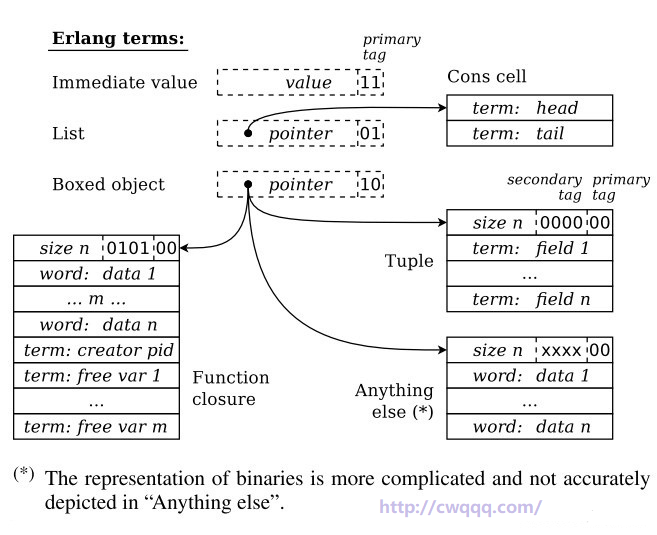原文 2014-10-24 19:16:20 发表于 CSDN,这里对以前写的文章做下收录。
erlang有两种复合结构,tuple和list,两者的区别是tuple子元素的个数是固定不变的,声明后就不能改变了;而list是可变的,可以通过[H|T]来取出或插入新元素。上篇文章讲了tuple相关的内容,本篇就讲erlang list方面的知识,主要说一些基本操作和常用的list函数,再讲一些可以优化的点。
list基本操作
1> A = [1, 2, 3, "abc"]. [1,2,3,"abc"] 2> length(A). 4 3> is_list(A). true 4> list_to_binary(A). <<1,2,3,97,98,99>> 5> list_to_bitstring(A). <<1,2,3,97,98,99>> 6> [A1|A2] = A. [1,2,3,"abc"] 7> A1. 1 8> A2. [2,3,"abc"] 9> hd(A). 1 10> tl(A). [2,3,"abc"] 11> B = [0|A]. [0,1,2,3,"abc"]

